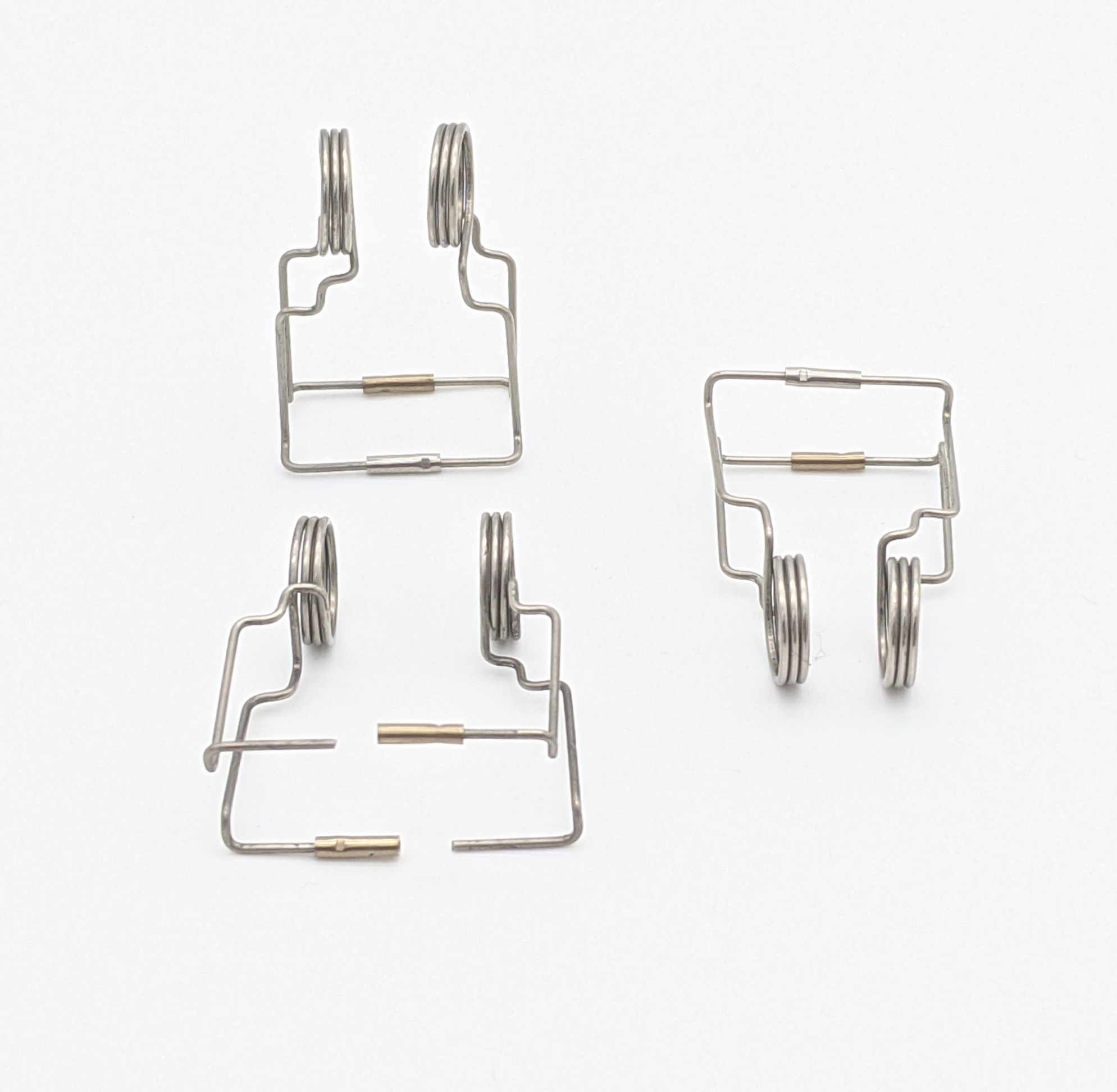Get unique, complex parts easily. No matter your requirements, Chaoyi Spring creates hard-to-produce coil springs and wire forms.
Let us help you create the custom wire form you need, from S-hooks and J-hooks to utility hooks and more.
We work closely with customers across a wide range of industries, helping them design and manufacture made-to-order parts.
Why choose Chaoyi Spring? We prioritize customer-focused collaboration, modern equipment and the latest technology to make your parts per print.
Find the information and guidance you need, from measuring a spring to learning about materials, placing an order and much more.
When it comes to springs, you've got choices. La springs and coil springs are two common types, but which one is right for you? Both offer a variety of applications,


When it comes to springs, you've got choices. La springs and coil springs are two common types, but which one is right for you? Both offer a variety of applications, but they have some key differences that could make one a better fit for your project. Let's dive into what sets them apart and explore which type might be ideal for your specific needs.

La springs, also known as leaf springs, are a classic design. They consist of a series of flat, curved metal strips, typically made of steel, that are stacked and clamped together. Think of them as a stack of flexible blades, each contributing to the overall spring action. La springs are well-known for their use in vehicle suspensions, particularly in older trucks and SUVs.
La springs are known for their durability and ability to handle heavy loads. They're often used in situations where you need a spring that can withstand repeated cycles of compression and expansion without losing its shape. They also offer a relatively smooth ride compared to other suspension systems.
Coil springs, as the name suggests, are made by coiling a wire around a central axis. They're incredibly versatile and come in a variety of sizes and configurations, making them suitable for a wide range of applications. You'll find coil springs in everything from car suspensions to mechanical devices and even household items like mattress supports.
Coil springs are prized for their flexibility and adaptability. They can be designed to provide specific spring rates, which affect how much force is required to compress or extend the spring. This makes them suitable for fine-tuning systems where precise spring characteristics are critical.
Choosing between la springs and coil springs ultimately boils down to the specific requirements of your application. Here's a breakdown of some key differences to help you make an informed decision:
La springs are known for their robustness and ability to handle heavy loads. They can withstand repeated compression and expansion without permanent deformation, making them a reliable choice for heavy-duty applications. Coil springs, on the other hand, while generally durable, may not be as well-suited for extreme loads or high stress cycles. For instance, you wouldn't find coil springs in the suspension of a heavy-duty truck.
Coil springs offer greater flexibility when it comes to spring rate. They can be customized to achieve a specific spring rate by varying factors like wire diameter, coil diameter, and the number of coils. This allows engineers to fine-tune the spring's behavior to match the needs of the application. La springs, while offering some degree of spring rate adjustment, don't offer the same level of customization as coil springs.
Generally, la springs tend to be more expensive than coil springs, primarily due to their more complex manufacturing process. Coil springs can be produced more efficiently using automated coiling machinery. The cost of both spring types can also be influenced by the material used and the specific requirements of the application.
La springs can occupy a significant amount of space, particularly in terms of width. They require a larger footprint to function effectively. Coil springs, being more compact, often require less space for installation. In applications where space is limited, coil springs might be the better choice.
La springs often provide a smoother and more stable ride, especially when carrying heavy loads. They tend to be more forgiving on rough roads. Coil springs, however, offer a greater range of ride characteristics, and can be fine-tuned to achieve specific handling and ride comfort characteristics.
The decision between la springs and coil springs comes down to a careful consideration of the unique demands of your project. Ask yourself:
By carefully evaluating these factors, you can determine which type of spring is the best fit for your needs.
While both la springs and coil springs play important roles in various applications, their distinct characteristics make them suited for different scenarios. La springs are durable and great for heavy loads, while coil springs offer greater flexibility and adaptability. By understanding the strengths and limitations of each type, you can choose the right spring for your project and ensure optimal performance and reliability. Ultimately, the best spring for you is the one that meets the specific demands of your application and delivers the desired results.
Remember, the right spring choice can significantly impact the performance and lifespan of your system. Don't hesitate to consult with a spring specialist if you're unsure about which type is right for your needs. They can provide expert guidance and help you choose the perfect spring for your specific application.
Browse some of the custom wire forms and springs that we manufacture. Don’t see what you need? We specialize in made-to-order products that meet your application requirements.
Visit Our GalleryNeed a custom wire form or coil spring? We make it work. Fill out the contact form and a representative will respond within 1 business day. If you have a PDF or CAD file, you can submit to request a quote.